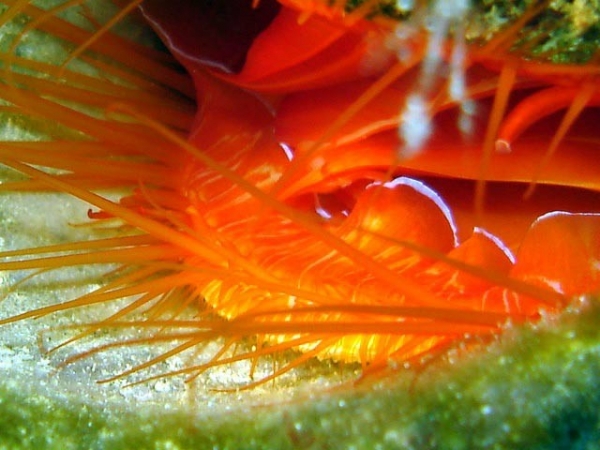Depth of ocean stores many beautiful creatures that are still alien to us. Researchers are baffled to see that even in the deepest and the darkest part of the oceans have different forms of life flourishing. They study the deepest parts of the water to find creatures and to understand how they flourish in such depths of oceans. One such marine organism that caught the attention of underwater divers is ‘disco clam’ (Ctenoides ales, a species of saltwater clam). Native to Indo-Pacific coral reefs, they are named so because they display flashes of light, just like a disco ball.
Underwater light show
Until now researchers engaged in unraveling the mystery of how and why these lights are displayed, believed that it could be the result of bioluminescence (similar to angler fish or fireflies) within the invertebrate’s tissue that produced these lights to lure a potential mate. But according to a latest study led by Lindsey Dougherty a marine biologist from the University of California, Berkeley explained that this unique behavior involves a much complex mechanism. The study also suggests that the display of light by the disco clam is primarily to attract prey or to frighten approaching predators.
With the help of a high power transmission electron microscopy, Dougherty and her team came across that the display of light was produced by specialized tissue, arranged in double layer. While one of these layers, is light reflecting on one side and light absorbing on the other. When the clam quickly rolled and unfurled this tissue, the light reflecting from tissue appears to be flashing. So far, these clams are the only species of bivalve that are known to have developed such structural coloration.
Food source and flashes of light
To further understand the use of this light exhibition, researchers analyzed the composition of proteins in the bivalve’s eyes. The findings showed that the invertebrate eyesight was too poor to even notice the flashes displayed by other clams in the vicinity. And therefore, the belief that the flashes could be used for attracting mate was completely discarded.
Team also conducted trials to observe the reaction of the light on various predators, which are generally octopi, mantis shrimp or predatory snails. The researchers intentionally moved false predators as Styrofoam lid towards the clam and noted their reactions. The team observed that the rate of flashes from 2 Hz, nearly doubled reaching 4 Hz.
The increase in flashes was also significant when phytoplankton were introduced in the clam’s tank. This indicates that food source also increases the flash rate, may be to lure in prey, though more research is needed to confirm this idea as researchers are not sure if phytoplankton and other prey species can see these flashes of light. Below is the video displaying flashes of light in the depths of the oceans:
Source: Nature World News




